Bahrain AI in Healthcare Market Outlook to 2030
By Clinical Application, By Component, By Deployment, By End-User, and By Data Source
- Product Code: TDR0235
- Region: Middle East
- Published on: August 2025
- Total Pages: 110
Introducing the World's FirstPay-Per-Section Market Reports
Why pay for the full report when you need just a part?
Start Building Your Report
Scroll down to see available sections
Report Summary
The report titled “Bahrain AI in Healthcare Market Outlook to 2030 – By Clinical Application, By Component, By Deployment, By End-User, and By Data Source” provides a comprehensive analysis of the AI adoption landscape across Bahrain’s healthcare system. The report covers the overview and genesis of the market, overall market size in terms of revenue, and granular market segmentation. It examines trends and developments, the regulatory and licensing environment, customer-level profiling, issues and challenges, and the competitive landscape, including competition scenario, cross-comparison, opportunities and bottlenecks, and company profiling of major players. The report concludes with future market projections to 2030 based on procedure and imaging-study volumes, claims transaction intensity, product/solution mix, end-user cohorts, and governorate-level deployment, supported by cause-and-effect relationships. It also includes Bahrain-specific success case studies that highlight major opportunities and cautions for stakeholders evaluating investment, partnership, and go-to-market strategies.
Bahrain AI in Healthcare Market Overview and Size
The Bahrain AI in healthcare market is valued at USD 290 million in 2023, drawn from a benchmark for the wider MENA region that includes Bahrain. This market is propelled by expanding medical databases and rising investments in AI infrastructure, particularly cloud capacity and compute resources dedicated to healthcare.
Within the MENA region, countries such as the UAE and Saudi Arabia lead, largely due to their significant healthcare digitization agendas, larger population bases, and advanced public–private partnerships accelerating AI deployment. Bahrain benefits from proximity to such digital transformation ecosystems and its cloud‑first policy, yet its smaller scale places it behind these regional heavyweights.
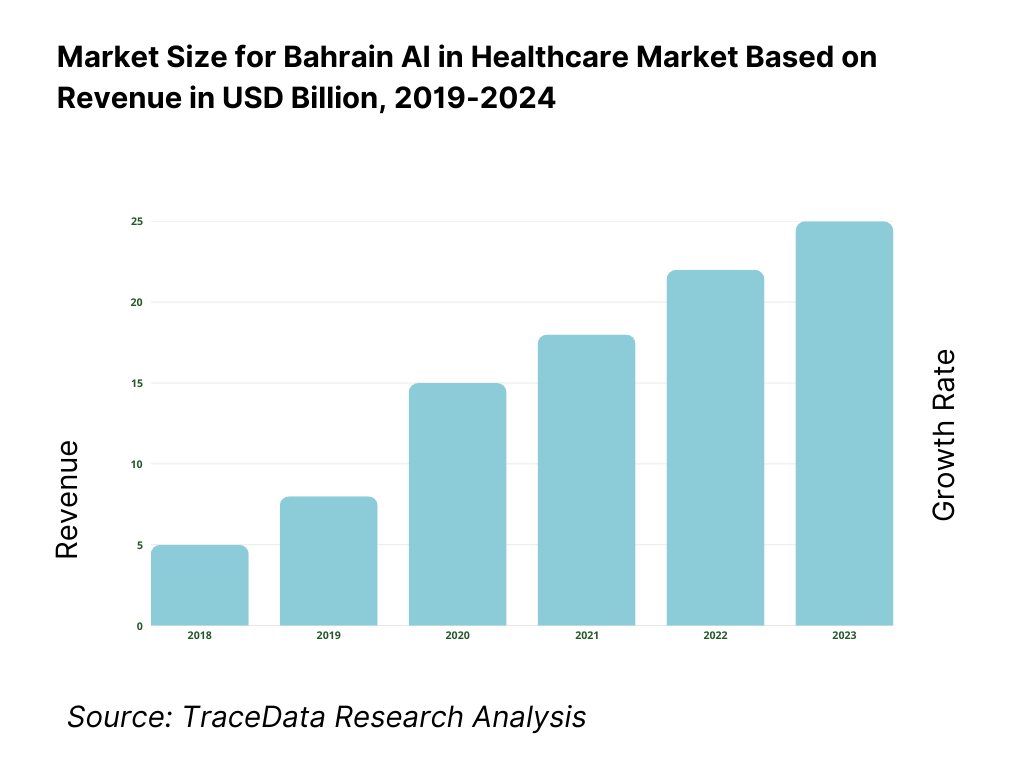
What Factors are Leading to the Growth of the Bahrain AI in Healthcare Market:
Cloud-first digital backbone and connected devices: Bahrain’s AI-in-healthcare adoption is enabled by a dense, modern connectivity base and hyperscale cloud onshore. Active broadband subscriptions reached about 2.6 million in Q4, giving providers and patients always-on access to telehealth, e-pharmacy and remote monitoring. Machine-to-machine lines stood at 584,000 across the economy, a concrete foundation for IoMT endpoints in ambulances, clinics and homecare. The Middle East (Bahrain) AWS Region operates 3 Availability Zones, letting hospitals localize data and deploy low-latency inference and disaster-resilient archives. This digital capacity serves a total population of 1,588,670 and an urban population of 1,429,787, concentrating demand and digital usage in care hubs.
Regulated provider footprint generating clinical data at scale: The National Health Regulatory Authority (NHRA) supervises a broad service base that continuously produces structured data streams for AI. Licensed facilities totaled 924, with 85 new facility licenses and 843 renewals in the latest reporting, while pharmacies reached 430 after 51 new licenses. On the workforce side, NHRA issued ~3,600 new licenses and ~8,700 renewals for physicians and specialists, and processed 743 new drug registrations plus 509 renewals alongside ~1,000 change requests—volumes that necessitate decision-support and safety-signal analytics. Regulatory oversight remains active: NHRA inspection teams conducted 1,271 visits and recorded 3,748 violations in a prior cycle, reinforcing quality controls that favor validated AI tools integrated into compliant workflows.
Data-rich clinical domains, especially imaging and oncology: Bahrain’s tertiary providers are amassing large, machine-readable datasets that suit AI. King Hamad University Hospital and the Bahrain Oncology Center report ~1,000,000 medical-imaging studies—~476,000,000 image files totaling ~48 TB—migrated to object storage, enabling algorithm training, federated learning and longitudinal follow-ups. With urban residents numbering 1,429,787, clinical throughput is naturally concentrated, supporting real-world validation of AI triage, segmentation and workflow orchestration in radiology and oncology. The country’s cloud-first posture plus on-region compute allows secure, in-country model deployment across PACS/VNA and tumor boards without cross-border transfers, accelerating adoption in precision diagnostics and care-pathway optimization.
Which Industry Challenges Have Impacted the Growth of the Bahrain AI in Healthcare Market:
Limited national scale constrains data diversity and external validation: AI models thrive on variety across demographics, comorbidities and devices. Bahrain’s care demand is focused within a total population of 1,588,670 and an urban cohort of 1,429,787, which means fewer rare-disease cases and narrower modality/vendor mixes compared with larger GCC neighbors. This can slow the creation of robust ground-truth datasets for subspecialties (for example, pediatric oncology or advanced cardiac imaging) and require carefully structured multi-institutional or cross-border collaborations to reach adequate case numbers for training and calibration without breaching data-transfer constraints. Vendors must design data-efficient training, synthetic augmentation and rigorous external testing to ensure generalizability at this population scale.
Fragmented provider landscape and compliance workload hinder interoperability: NHRA reports 924 licensed facilities and 430 pharmacies served by thousands of licensed professionals, which increases heterogeneity in EHRs, LIS/RIS and pharmacy systems. In practice, AI enablement requires standards-based data flows (HL7/FHIR/DICOM) and consistent consent models across many organizations. The regulator’s documented 1,271 inspections and 3,748 violations in a prior reporting cycle illustrate active enforcement that providers must navigate while modernizing. High volumes of market-authorization activity—743 new drug submissions, 509 renewals and ~1,000 change requests—compete for regulatory bandwidth, potentially lengthening timelines for software-as-a-medical-device (SaMD) and AI-enabled device reviews unless dossiers are complete, traceable and aligned to local labeling and vigilance requirements.
Stringent data-protection and localization guardrails raise delivery complexity: Bahrain’s Law No. 30 of 2018 on Personal Data Protection (PDPL) defines health data as sensitive and prescribes strict processing conditions, controller duties and cross-border transfer rules across 55 pages of statute and subsequent implementing guidance. Professional commentary notes at least 10 ministerial resolutions supplementing the regime. While the government’s Cloud First framework and the AWS Bahrain Region (3 AZs) facilitate in-kingdom hosting, AI programs must map data flows, retention and subject rights to PDPL obligations, and embed encryption, auditability and DPIAs into deployments. These safeguards are essential but add non-trivial operational work for hospitals, vendors and CROs integrating AI into clinical production.
What are the Regulations and Initiatives which have Governed the Market:
NHRA licensing of facilities, professionals and products: NHRA maintains the official register and performs inspections, licensing and vigilance across providers and products. The latest public reporting cites 924 licensed facilities and 430 pharmacies, following 85 new facility licenses and 843 renewals. Professional licensing throughput—~3,600 new and ~8,700 renewal licenses—supports staffing growth while preserving oversight. On the therapeutics side, 743 new drug registration files, 509 renewals and ~1,000 change requests were processed. For AI vendors, SaMD classification and licensing must dovetail with this supervision, with documentation ready for audits and post-market surveillance.
Personal Data Protection Law (PDPL) and sensitive-health-data processing: PDPL (Law No. 30 of 2018) governs automated processing, controller obligations, subject rights and data transfers, with the consolidated law spanning 55 pages on the national portal. Sector analyses highlight 10 ministerial resolutions that add operative detail. Health data’s “sensitive” status triggers explicit consent or statutory bases, records of processing, and organizational/technical controls tailored to risk. AI projects that move from pilots to production must evidence lawful basis, retention schedules, breach notification readiness and processor contracts, especially when training pipelines use de-identification or pseudonymization.
Cloud First policy and in-country cloud infrastructure: Bahrain’s Cloud First policy directs ministries and agencies to prioritize cloud where it’s fit-for-purpose and secure, anchoring digital health workloads in elastic compute and storage. Practically, the AWS Middle East (Bahrain) Region offers 3 independent Availability Zones that satisfy resiliency and data-residency preferences for provider archives, AI inference endpoints and regulated registries. For license holders, this policy context supports designs that keep clinical data in-kingdom while enabling scalable model deployment, continuous monitoring and immutable audit logs.
Bahrain AI in Healthcare Market Segmentation
By Application Area: The Bahrain AI in Healthcare market is segmented by application area into Radiology AI, Clinical Workflow Automation, Oncology AI, Cardiology AI, and Pathology AI. Currently, Radiology AI leads in market share, driven by high imaging volumes, central PACS integration, and early adoption of triage tools to reduce radiologist workloads. Clinical Workflow Automation follows, as hospitals prioritize efficiency in scheduling, documentation, and administrative cycles. Oncology AI is gaining traction due to rising demand for intelligent treatment planning support. Cardiology and Pathology AI are still emerging, with smaller footprints reflecting niche adoption primarily in tertiary centers with specialist roles and digital pathology pipelines.
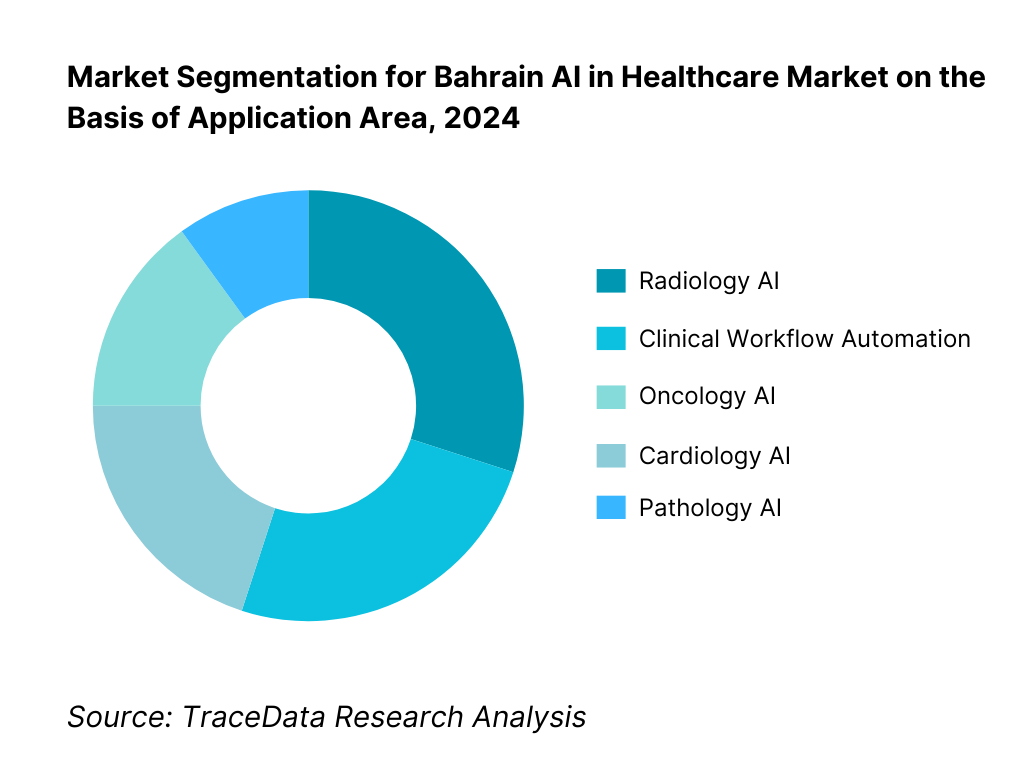
By Component Type: The market is segmented into Software Solutions, AI Services, and Hardware. Software Solutions dominate, capturing over half the market share. This dominance stems from the fact that healthcare institutions in Bahrain increasingly procure cloud‑native or platform‑based AI tools (e.g., radiology algorithms, NLP assistants), avoiding capital-intensive hardware. AI Services—including system integration, customization, and clinical validation—constitute the next largest share, as local partners and SIs provide critical deployment expertise. Hardware remains the smallest segment, limited to edge‑AI servers or specialized imaging accelerators, since most AI workloads leverage public cloud infrastructure (e.g., AWS Middle East Bahrain region) or lightweight on‑site compute, thus minimizing large hardware investments.
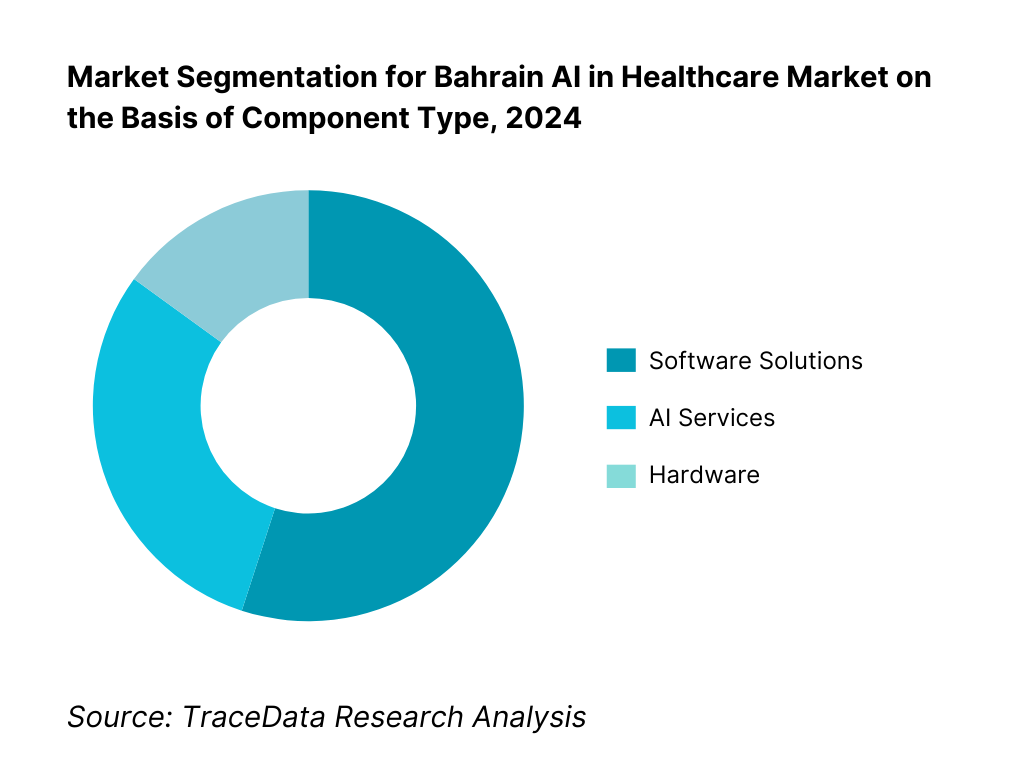
Competitive Landscape in Bahrain AI in Healthcare Market
The Bahrain AI in Healthcare market is concentrated among several key vendors offering advanced imaging, NLP, and clinical decision‑support tools. Leading global players like Siemens Healthineers and GE HealthCare are complemented by cloud‑giants such as AWS and Microsoft supplying underlying infrastructure. Meanwhile, regional specialists and AI innovators also contribute through solution localization and integration.
Name | Founding Year | Original Headquarters |
Siemens Healthineers | 1847 | Erlangen, Germany |
GE HealthCare | 1892 | Chicago, USA |
Philips Healthcare | 1891 | Eindhoven, Netherlands |
Agfa HealthCare | 1867 | Mortsel, Belgium |
Fujifilm Healthcare | 1934 | Tokyo, Japan |
Sectra | 1978 | Linköping, Sweden |
Microsoft (Nuance, Azure AI) | 1975 | Redmond, USA |
Amazon Web Services (Health) | 2006 | Seattle, USA |
Google Cloud (Med-PaLM, APIs) | 1998 | Mountain View, USA |
Merative (ex-IBM Watson) | 2022 | New York, USA |
Oracle Health (Cerner) | 1979 | Kansas City, USA |
InterSystems (TrakCare) | 1978 | Cambridge, USA |
Qure.ai | 2016 | Mumbai, India |
Aidoc | 2016 | Tel Aviv, Israel |
Lunit | 2013 | Seoul, South Korea |
Some of the Recent Competitor Trends and Key Information About Competitors Include:
Siemens Healthineers: A major medical technology provider in Bahrain, Siemens Healthineers has expanded its AI-enabled radiology solutions by integrating advanced imaging algorithms into hospital PACS systems. In 2024, it partnered with regional healthcare providers to support workflow automation in diagnostic imaging, addressing growing demand for faster turnaround times.
GE HealthCare: Strengthening its digital health portfolio, GE HealthCare introduced AI-powered cardiology and oncology tools into Bahraini hospitals. The company has focused on real-time clinical decision support, leveraging partnerships with cloud providers to deploy AI models seamlessly in hybrid infrastructures.
Philips Healthcare: Philips has reinforced its presence in Bahrain through AI solutions for remote patient monitoring and predictive analytics. In 2024, it introduced advanced patient engagement platforms to support value-based care initiatives, aligning with the national healthcare transformation goals.
Qure.ai: As an AI startup with a growing footprint in the GCC, Qure.ai scaled its deployment of chest X-ray and CT scan algorithms across diagnostic centers in Bahrain. The company’s focus on regulatory compliance and Arabic language interface support has helped strengthen its adoption in both public and private hospitals.
Aidoc: Aidoc has expanded its AI solutions in radiology within Bahrain, particularly in emergency departments to assist in critical triage cases. In 2024, it collaborated with leading hospitals to demonstrate measurable reductions in reporting delays, positioning itself as a key enabler of faster and safer care delivery.
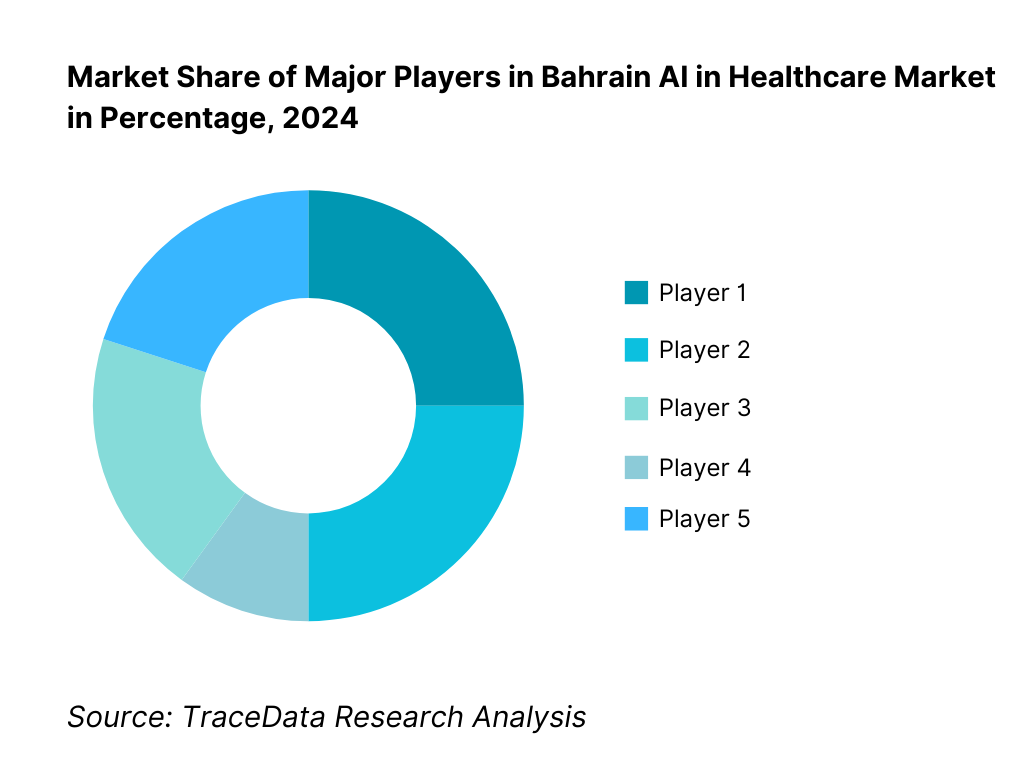
What Lies Ahead for Bahrain AI in Healthcare Market?
The Bahrain AI in healthcare market is set to accelerate as hospitals, payers, and regulators align around clinical safety, data residency, and interoperable infrastructure. With an on-shore hyperscale cloud region, an active licensing regime under NHRA, and digitized rails like iSeha and HIKMA eClaims, providers can scale AI from pilots to production across imaging, documentation, and revenue cycle. Expect broader clinical validation, tighter model governance, and growing collaborations with GCC centers to expand ground-truth datasets and real-world evidence.
Rise of Hybrid AI Deployment (Cloud + Edge): Bahrain’s Cloud-First policy and the AWS Middle East (Bahrain) Region enable secure in-kingdom hosting for inference, while edge compute at PACS/VNA and modality level supports low-latency use cases in radiology, cardiology, and emergency care. Hospitals will increasingly operate hybrid architectures—cloud for training, monitoring, and orchestration; edge for real-time triage and QA—backed by zero-trust security, encryption, and auditable MLOps. This reduces integration debt, speeds go-lives, and improves uptime for AI-enabled workflows in high-throughput departments.
Shift to Outcome-Based AI and Reimbursement Readiness: As payers under Sehati pursue efficiency and quality, AI contracts will move from license-only to outcome-linked models tied to turnaround time reduction, denial avoidance, and length-of-stay impact. Expect pilots to include explicit KPI baselines, shadow-mode validation, and phased activation gates. Providers will prioritize explainability, clinical safety cases, and post-market surveillance artifacts that seamlessly plug into internal audit and NHRA oversight, creating clearer pathways for sustained funding and multi-site expansion.
Expansion of Pathway-Specific Solutions in Radiology, Oncology, and RCM: Early traction in imaging will extend to tumor board support, real-world evidence generation, and precision-oncology navigation. In parallel, revenue cycle automation—coding lift, prior-auth, and claim-edit intelligence—will gain momentum as hospitals aim to improve cashflow on eClaims rails. Specialty clinics and private hospitals will adopt curated AI portfolios (triage + reporting + QA + operations), with packaged integrations to leading HIS/EHR and PACS stacks used across Bahrain’s public and private networks.
LLMs, Arabic Medical NLP, and Ambient Clinical Scribing: LLM-powered tools will mature from pilots to production for note drafting, coding assistance, and patient engagement—especially where Arabic/English bilingual workflows are essential. Expect privacy-preserving approaches (de-identification, federated learning, secure enclaves) to become standard, alongside robust prompt governance and human-in-the-loop verification. As clinicians see measurable documentation time savings and fewer denials, hospitals will broaden adoption to primary care, emergency departments, and virtual clinics, improving both throughput and clinician experience.
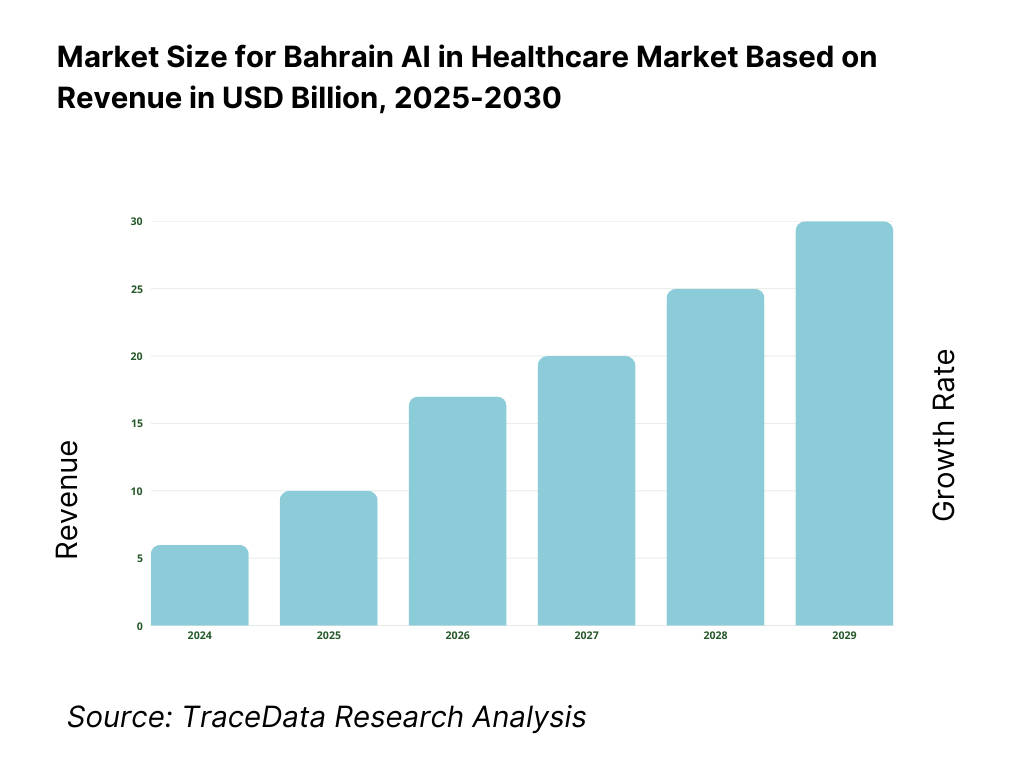
Bahrain AI in Healthcare Market Segmentation
By Clinical Application
Radiology AI
Oncology AI
Cardiology AI
Pathology AI
Workflow/Administrative Automation
By Component Type
Software Solutions
AI Services (Implementation, Integration, Validation)
Hardware
By Deployment Mode
On-Premises
Cloud (AWS Bahrain, Azure, Google Cloud)
Hybrid Models
Edge AI (On-device Imaging/Monitoring)
By End User
Public Hospitals & Clinics
Private Hospitals & Specialty Clinics
Laboratories & Imaging Centers
Health Insurance Payers
Telehealth & Digital Health Startups
By Healthcare Data Source
EHR/Claims Data (iSeha, HIKMA eClaims)
Imaging Data (PACS, VNA, Radiology Modalities)
Genomics & Precision Medicine Data
Wearables & IoMT Streams
Patient-Reported Data & Virtual Care Platforms
Players Mentioned in the Report:
Oracle Health (Cerner)
InterSystems (TrakCare)
Siemens Healthineers
GE HealthCare
Philips Healthcare
Agfa HealthCare
Fujifilm Healthcare
Sectra
Microsoft (Azure Health AI/Nuance)
Amazon Web Services (Health AI/Imaging)
Google Cloud (Healthcare APIs)
Merative (ex‑IBM Watson Health)
Qure.ai
Aidoc
Lunit
Key Target Audience
CIOs / CMIOs of Public Hospitals
CIOs of Private Hospitals & Specialty Centers
Government and Regulatory Bodies
Chief Information Officers of Insurance Entities
Healthcare Payer Executives focusing on AI‑based Models
HealthTech Venture Funds and Investment Firms
Technology Procurement Heads in Public Sector IT Agencies
IT Heads of Telehealth & Digital Health Startups
Time Period:
Historical Period: 2019-2024
Base Year: 2025
- Forecast Period: 2025-2030
Report Coverage
Choose individual sections to purchase. Mix and match as you like.
- -
- -
- $100
4.1 Delivery Model Analysis for AI in Healthcare-On-premises, Cloud-based, Hybrid, Edge (Margins, Preferences, Strengths & Weaknesses)
4.2 Revenue Streams for AI in Healthcare in Bahrain-Licensing, Subscription, Pay-per-use, Outcome-based Models
4.3 Business Model Canvas for Bahrain AI in Healthcare Market
$2505.1 Public vs Private Healthcare Providers in AI Adoption
5.2 Investment Model in Bahrain AI in Healthcare Market (Government Grants, Private Equity, Venture Capital, Public-Private Partnerships)
5.3 Comparative Analysis of AI Adoption in Public vs Private Hospitals & Clinics
5.4 Healthcare IT & AI Budget Allocation by Provider Size
$150- $100
- $200
8.1 Revenues, 2019-2024
$3009.1 By Market Structure (In-House Development vs Outsourced AI Solutions)
9.2 By Clinical Application (Radiology, Pathology, Cardiology, Oncology, Primary Care, Population Health)
9.3 By Healthcare Verticals (Hospitals, Specialty Clinics, Laboratories, Telemedicine, Insurance)
9.3.1 By Radiology AI Solutions (Imaging, Triage, Diagnostics)
9.3.2 By Pathology AI Solutions (Digital Pathology, Lab Analytics)
9.3.3 By Cardiology AI Solutions (Predictive Analytics, Early Detection, Workflow Optimization)
9.3.4 By Oncology AI Solutions (Clinical Decision Support, Genomic AI, Tumor Board Tools)
9.4 By Provider Size (Large Hospitals, Mid-sized Hospitals, Specialty Clinics, Small Clinics)
9.5 By Patient Engagement Tools (Chatbots, NLP Assistants, Virtual Care, Remote Monitoring)
9.6 By Deployment Mode (On-premises, Cloud, Hybrid, Edge)
9.7 By Open vs Customized AI Programs
9.8 By Region (Capital Governorate, Northern Governorate, Southern Governorate, Muharraq Governorate)
$40010.1 Healthcare Provider Landscape and Cohort Analysis
10.2 AI Adoption Needs and Decision-Making Process by Hospitals & Payers
10.3 AI Program Effectiveness and ROI Analysis
10.4 Gap Analysis Framework
$50011.1 Trends and Developments for Bahrain AI in Healthcare Market
11.2 Growth Drivers for Bahrain AI in Healthcare Market
11.3 SWOT Analysis for Bahrain AI in Healthcare Market
11.4 Issues and Challenges for Bahrain AI in Healthcare Market
11.5 Government Regulations for Bahrain AI in Healthcare Market (NHRA, SCH, Cloud-First Policy, Data Residency Regulations)
$20012.1 Market Size and Future Potential for Online AI-enabled Healthcare in Bahrain
12.2 Business Models and Revenue Streams
12.3 AI Delivery Models and Healthcare Applications
12.4 Cross-Comparison of Leading AI & Digital Health Companies in Bahrain based on Company Overview, Investment & Funding, Revenues, Client Base, AI Solutions, Pricing, Technology Partnerships, and Major Use-Cases
$500- $250
- $150
15.1 Market Share of Key Players in Bahrain AI in Healthcare Market (Revenue Basis)
15.2 Benchmark of Key Competitors in Bahrain AI in Healthcare Market including variables such as Company Overview, USP, Business Strategies, Business Model, AI Product Portfolio, NHRA Approvals, Local Partnerships, Revenues, Pricing Model, Technology Used, Key Clients, Strategic Tie-ups, Marketing Strategy, Recent Developments
15.3 Operating Model Analysis Framework
15.4 Gartner Magic Quadrant Mapping (Adapted for Bahrain AI Healthcare Providers)
15.5 Bowmans Strategic Clock for Competitive Advantage
$75016.1 Revenues, 2025-2030
$30017.1 By Market Structure (In-House Development vs Outsourced AI Solutions)
17.2 By Clinical Application (Radiology, Pathology, Cardiology, Oncology, Primary Care, Population Health)
17.3 By Healthcare Verticals (Hospitals, Specialty Clinics, Laboratories, Telemedicine, Insurance)
17.3.1 By Radiology AI Solutions
17.3.2 By Pathology AI Solutions
17.3.3 By Cardiology AI Solutions
17.3.4 By Oncology AI Solutions
17.4 By Provider Size (Large Hospitals, Mid-sized Hospitals, Specialty Clinics, Small Clinics)
17.5 By Patient Engagement Tools (Chatbots, NLP Assistants, Remote Monitoring, Virtual Care)
17.6 By Deployment Mode (On-premises, Cloud, Hybrid, Edge)
17.7 By Open vs Customized AI Programs
17.8 By Region (Capital, Northern, Southern, Muharraq Governorates)
$400- $250
- $250
Research Methodology
Step 1: Ecosystem Creation
Map the Bahrain AI in Healthcare ecosystem by identifying both demand-side and supply-side entities. Demand-side participants include public hospitals (Salmaniya Medical Complex, King Hamad University Hospital, Bahrain Defense Force Hospital), private hospitals (American Mission, Royal Bahrain, KIMSHEALTH, Ibn Al-Nafees, Bahrain Specialist Hospital), health insurance payers (Sehati program, Solidarity, BNI, BNL), and regulatory authorities (NHRA, Supreme Council of Health, iGA). Supply-side players include global technology providers (Siemens Healthineers, GE HealthCare, Philips, Oracle Health, InterSystems), AI startups (Qure.ai, Aidoc, Lunit), and cloud hyperscalers (AWS Bahrain, Microsoft Azure, Google Cloud). Based on this mapped ecosystem, we shortlist 5–6 leading technology and AI vendors active in Bahrain using financial disclosures, regional market presence, and installed base within provider networks.
Step 2: Desk Research
An exhaustive desk research exercise is conducted using authoritative government portals (NHRA reports, iGA publications), industry news sources, and proprietary healthcare databases. This research aggregates industry-level insights such as number of licensed facilities (924), pharmacies (430), and registered healthcare professionals (~12,000 active licenses), alongside ICT adoption statistics from TRA and cloud deployment updates. Company-level data such as financial results, investment announcements, partnership press releases, and regulatory filings are reviewed to establish vendor strategies. Detailed focus is placed on revenues derived from healthcare AI portfolios, breadth of AI-enabled solutions (radiology, oncology, RCM automation), and deployment models (cloud, edge, hybrid). This creates a foundational knowledge base of Bahrain’s AI healthcare market.
Step 3: Primary Research
In-depth interviews are initiated with C-level executives, IT directors, and clinical department heads from Bahraini hospitals and payers, as well as representatives from AI vendors and cloud service providers. These structured conversations validate hypotheses on adoption readiness, regulatory bottlenecks, and integration challenges. A bottom-up approach is taken to calculate revenue contributions of individual players, while disguised interviews as potential clients are also conducted to triangulate information on pricing models, workflows, and ROI case studies. This enables corroboration of primary insights with secondary datasets, ensuring a robust picture of AI-enabled clinical and operational workflows in Bahrain.
Step 4: Sanity Check
A dual top-down and bottom-up validation framework is applied to ensure consistency of findings. Market sizing models are tested against macro-level indicators such as Bahrain’s healthcare expenditure (over USD 1.6 billion annually, World Bank), population base (1.58 million), and digital infrastructure capacity (2.6 million broadband subscriptions, TRA). Revenue projections are cross-checked with hospital IT spending patterns, payer reimbursement models, and vendor portfolio performance. Iterative calibration across independent data streams ensures accuracy, resulting in a reliable and validated market assessment.
FAQs
01 What is the Potential for the Bahrain AI in Healthcare Market?
The Bahrain AI in Healthcare Market is positioned for strong growth, underpinned by the country’s cloud-first policy, modern health infrastructure, and proactive regulatory environment. In 2023, the wider MENA AI in Healthcare market was valued at USD 290 million, with Bahrain contributing as a digitally advanced hub supported by the AWS Middle East (Bahrain) Region and extensive broadband penetration of 2.6 million active subscriptions. The market’s potential is further reinforced by the government’s emphasis on digital health transformation, the integration of AI in diagnostic and workflow systems, and rising demand for precision medicine across the public and private healthcare sectors.
02 Who are the Key Players in the Bahrain AI in Healthcare Market?
The Bahrain AI in Healthcare Market features several key players, including Siemens Healthineers, GE HealthCare, and Philips Healthcare, which dominate imaging and diagnostics with AI-powered solutions. Cloud service providers such as Amazon Web Services, Microsoft Azure, and Google Cloud play a crucial role by enabling compliant AI hosting and deployment in the country. Notable AI-specific companies include Qure.ai, Aidoc, and Lunit, recognized for their focus on radiology and oncology solutions. Other influential players include InterSystems (TrakCare), Oracle Health (Cerner), Agfa HealthCare, Fujifilm Healthcare, Sectra, and Merative (ex-IBM Watson Health), each contributing to Bahrain’s AI healthcare ecosystem with specialized solutions and hospital partnerships.
03 What are the Growth Drivers for the Bahrain AI in Healthcare Market?
The primary growth drivers include robust digital infrastructure with 2.6 million broadband subscriptions and 584,000 machine-to-machine lines, supporting IoMT and telehealth adoption. Strong regulatory capacity, with 924 licensed health facilities and 430 pharmacies under NHRA oversight, generates structured healthcare data streams crucial for AI deployment. Additionally, the presence of ~1 million medical imaging studies (48 TB of image files) at King Hamad University Hospital demonstrates Bahrain’s readiness to implement AI in radiology and oncology. Collectively, these macroeconomic and structural drivers ensure a fertile environment for AI-enabled diagnostics, workflow automation, and patient engagement.
04 What are the Challenges in the Bahrain AI in Healthcare Market?
The Bahrain AI in Healthcare Market faces several challenges, including limited national scale, with a population of 1.58 million and 1.42 million urban residents, which constrains data diversity for AI model training. Compliance burdens are high, as NHRA processed 743 new drug registrations, 509 renewals, and ~1,000 change requests alongside 1,271 facility inspections, creating a complex regulatory environment for AI vendors. Moreover, strict data protection under Law No. 30 of 2018 (PDPL) requires in-country hosting, lawful consent, and rigorous audit trails, increasing deployment complexity. These barriers highlight the need for localized innovation, strong governance frameworks, and partnerships to achieve sustainable AI adoption.